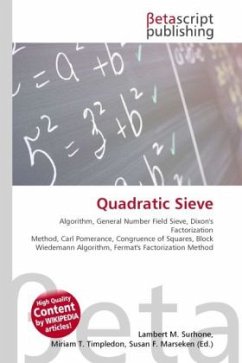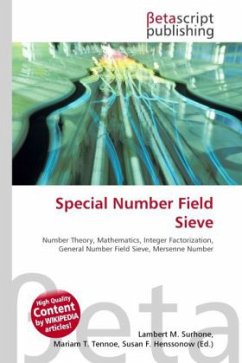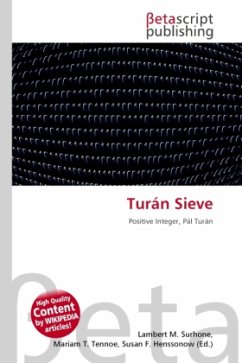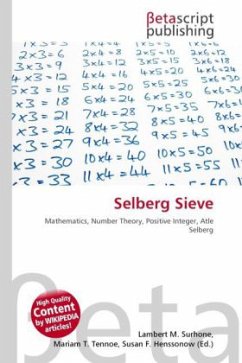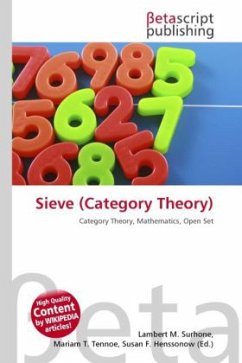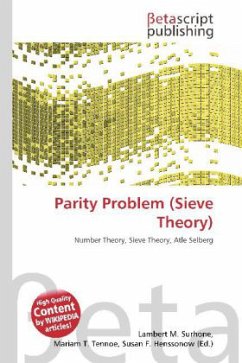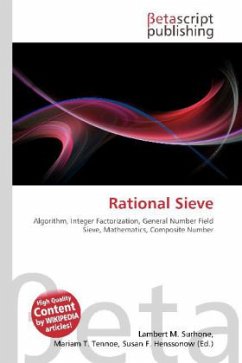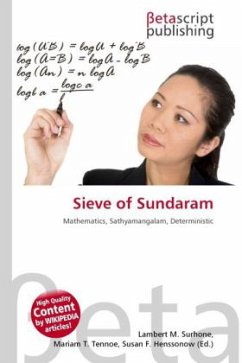
Sieve of Sundaram
Versandkostenfrei!
Versandfertig in 6-10 Tagen
23,99 €
inkl. MwSt.

PAYBACK Punkte
12 °P sammeln!
High Quality Content by WIKIPEDIA articles! In mathematics, the sieve of Sundaram is a simple deterministic algorithm for finding all prime numbers up to a specified integer. It was discovered in 1934 by S. P. Sundaram, an Indian student from Sathyamangalam. The remaining numbers are doubled and incremented by one, giving a list of the odd prime numbers (i.e., all primes except the only even prime 2). The sieve of Sundaram is equivalent to the sieve of Eratosthenes, except that the initial list corresponds only to the odd integers; the work of "crossing out" the multiples of 2 is done by the f...
High Quality Content by WIKIPEDIA articles! In mathematics, the sieve of Sundaram is a simple deterministic algorithm for finding all prime numbers up to a specified integer. It was discovered in 1934 by S. P. Sundaram, an Indian student from Sathyamangalam. The remaining numbers are doubled and incremented by one, giving a list of the odd prime numbers (i.e., all primes except the only even prime 2). The sieve of Sundaram is equivalent to the sieve of Eratosthenes, except that the initial list corresponds only to the odd integers; the work of "crossing out" the multiples of 2 is done by the final double-and-increment step. Whenever Eratosthenes' method would cross out k different multiples of a prime 2i+1, Sundaram's method crosses out i + j(2i+1) for 1le jle lfloor k/2rfloor. So, an odd integer is excluded from the final list if and only if it has a factorization of the form (2i + 1)(2j + 1) which is to say, if it has a non-trivial odd factor. Since every odd composite number has a non-trivial odd factor, we may safely say that an odd integer is excluded from the final list if and only if it is composite.



